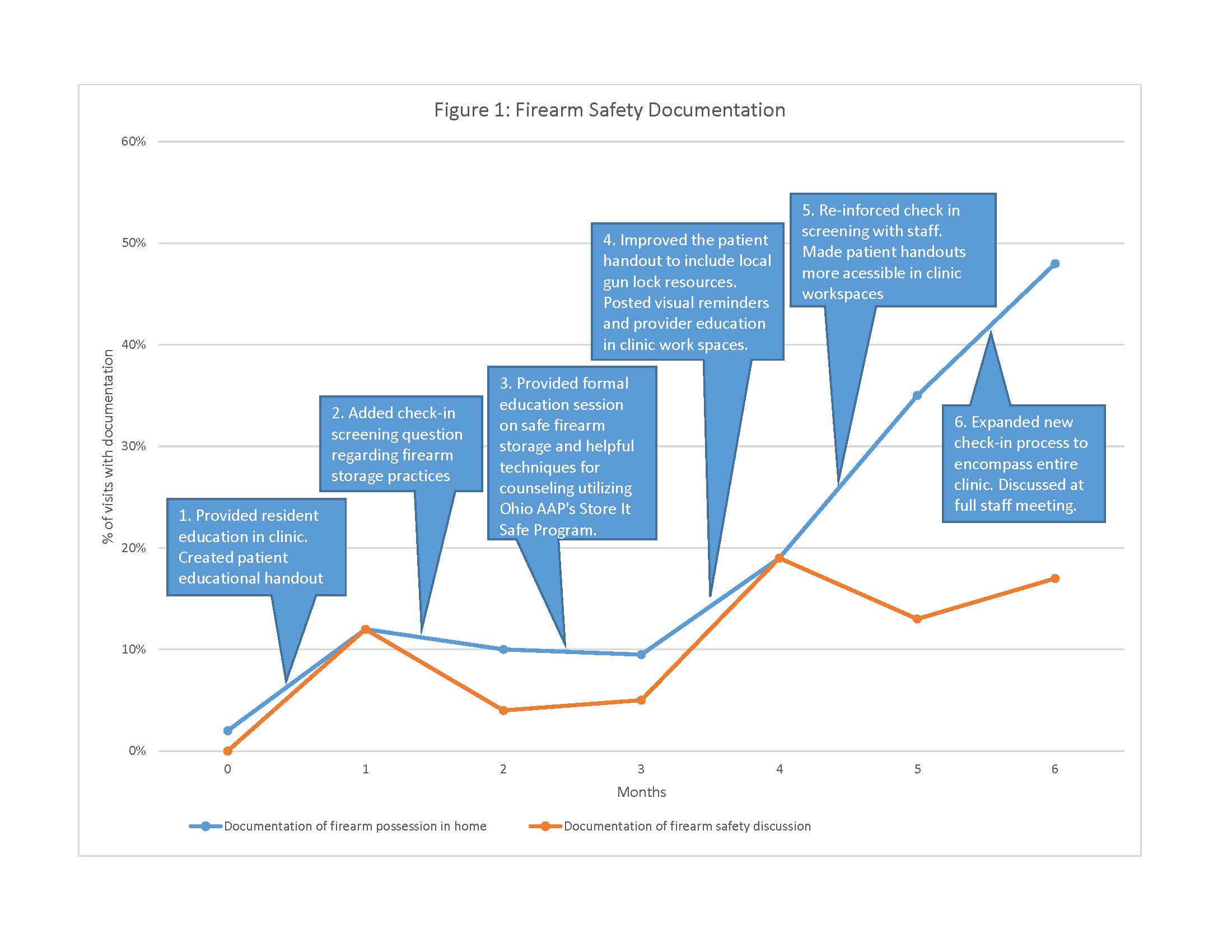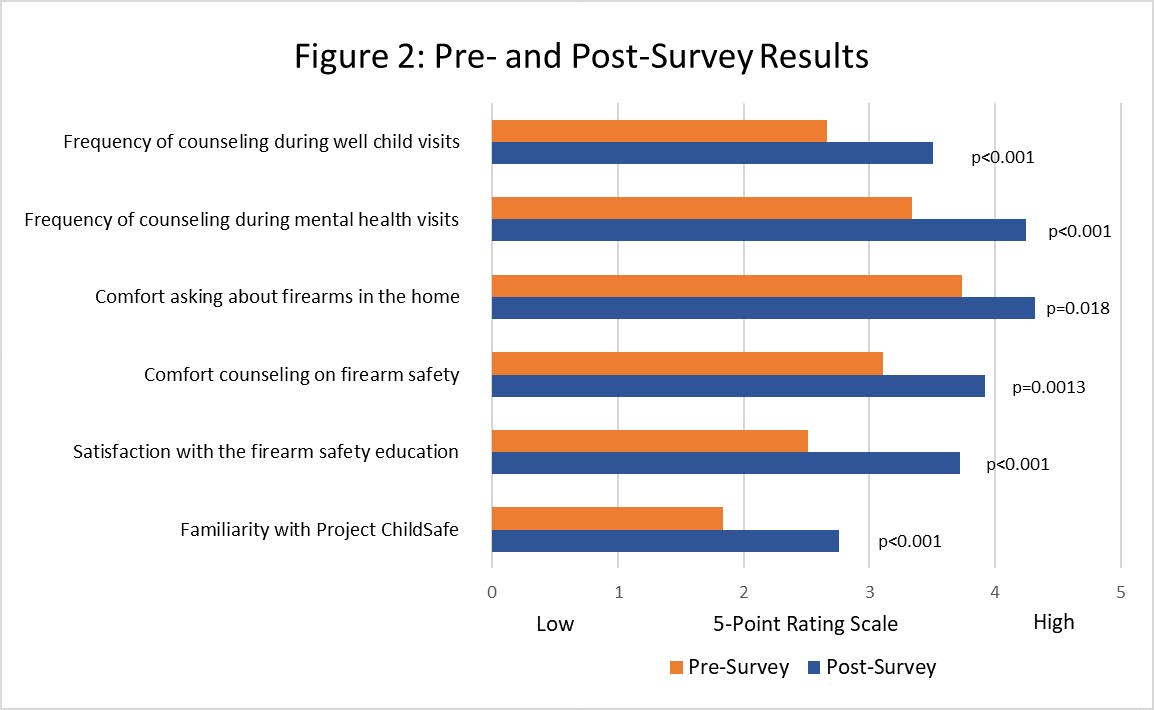Back
Injury Prevention
Category: Abstract Submission
Injury Prevention I
115 - A Quality Improvement Project on Firearm Safety in a Pediatric Continuity Clinic
Sunday, April 24, 2022
3:30 PM – 6:00 PM US MT
Poster Number: 115
Publication Number: 115.329
Publication Number: 115.329
Kara J. Knickerbocker, Uniformed Services University of the Health Sciences F. Edward Hebert School of Medicine, Xenia, OH, United States; Dillon A. Stanfield, Wright State University Boonshoft School of Medicine, Dayton, OH, United States; Michelle Kiger, Uniformed Services University of the Health Sciences F. Edward Hebert School of Medicine, Dayton, OH, United States; Amanda M. Asbury, Uniformed Services University of the Health Sciences F. Edward Hebert School of Medicine, Maryville, IL, United States

Amanda M. Asbury, MD
Staff Pediatrician
Uniformed Services University of the Health Sciences F. Edward Hebert School of Medicine
Maryville, Illinois, United States
Presenting Author(s)
Background: Gun violence is the 2nd leading cause of death for children aged 1-18 years in the US, and children account for 26% of unintentional firearm deaths. Although research in pediatrics has shown high parent acceptance of physicians discussing firearm safety, many pediatric trainees do not feel comfortable asking patient families about firearms in the home or counseling on firearm safety.
Objective: To examine the effect of a quality improvement project on physician attitudes, knowledge, and practices surrounding firearm safety counseling.
Design/Methods: From Feb 2020 to Apr 2021, a Pediatric Residency Clinic implemented a quality improvement project on firearm storage and safety counseling. Following the Institute for Healthcare Improvement’s Model for Improvement, residents set the primary outcome measure as the percentage of well visits and mental health visits in which firearm safety was addressed, with a goal of documented counseling in 75% of encounters. A second key process measure was the percentage of visits that documented whether firearms in the home were stored safely. Residents designed and implemented tests of change using iterative Plan-Do-Study-Act (PDSA) cycles. Participants completed an anonymous, 20-item survey at the start and upon completion to gauge its effect on attitudes, knowledge, and practices.
Results: The clinic implemented six PDSA Cycles (Figure 1). Documentation of firearm safety counseling during well visits and mental health visits increased from 0% at baseline to 17% upon project completion. Documentation of safe firearm storage in the home increased from 2% to 48%. Thirty-seven of 47 residents (79%) and six of seven (85%) clinic attendings completed surveys. After completion of the project, respondents reported increased comfort in counseling on firearm safety and higher rates of actual counseling on firearm safety during well visits and mental health visits (Figure 2). They also reported more familiarity with firearm safety campaigns and increased satisfaction with firearm safety education during residency.Conclusion(s): A quality improvement project on firearm safety within a pediatric continuity clinic increased rates of safety counseling and documentation of safe storage practices, although not at the rate set for the initial outcome measure. The project improved physician knowledge and comfort regarding firearm safety counseling.
Disclaimer: The views reported in this manuscript are those of the authors alone and do not reflect the views of the United States Air Force, Department of Defense, or United States Government.
Figure 1: Firearm Safety Documentation
Figure 2: Pre- and Post- Survey Results
Objective: To examine the effect of a quality improvement project on physician attitudes, knowledge, and practices surrounding firearm safety counseling.
Design/Methods: From Feb 2020 to Apr 2021, a Pediatric Residency Clinic implemented a quality improvement project on firearm storage and safety counseling. Following the Institute for Healthcare Improvement’s Model for Improvement, residents set the primary outcome measure as the percentage of well visits and mental health visits in which firearm safety was addressed, with a goal of documented counseling in 75% of encounters. A second key process measure was the percentage of visits that documented whether firearms in the home were stored safely. Residents designed and implemented tests of change using iterative Plan-Do-Study-Act (PDSA) cycles. Participants completed an anonymous, 20-item survey at the start and upon completion to gauge its effect on attitudes, knowledge, and practices.
Results: The clinic implemented six PDSA Cycles (Figure 1). Documentation of firearm safety counseling during well visits and mental health visits increased from 0% at baseline to 17% upon project completion. Documentation of safe firearm storage in the home increased from 2% to 48%. Thirty-seven of 47 residents (79%) and six of seven (85%) clinic attendings completed surveys. After completion of the project, respondents reported increased comfort in counseling on firearm safety and higher rates of actual counseling on firearm safety during well visits and mental health visits (Figure 2). They also reported more familiarity with firearm safety campaigns and increased satisfaction with firearm safety education during residency.Conclusion(s): A quality improvement project on firearm safety within a pediatric continuity clinic increased rates of safety counseling and documentation of safe storage practices, although not at the rate set for the initial outcome measure. The project improved physician knowledge and comfort regarding firearm safety counseling.
Disclaimer: The views reported in this manuscript are those of the authors alone and do not reflect the views of the United States Air Force, Department of Defense, or United States Government.
Figure 1: Firearm Safety Documentation

Figure 2: Pre- and Post- Survey Results

